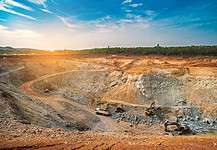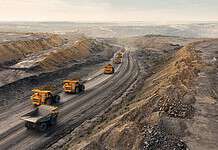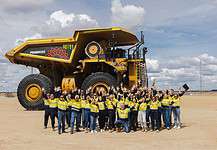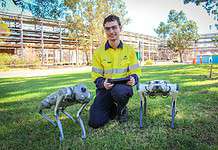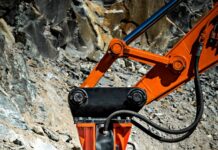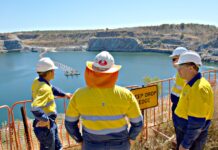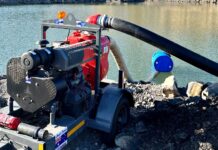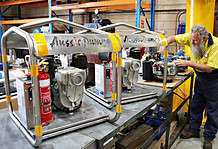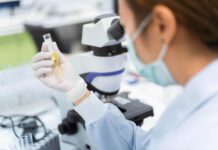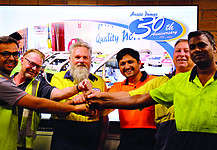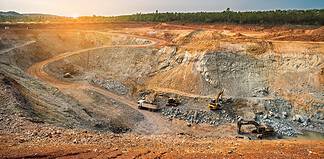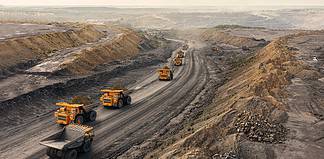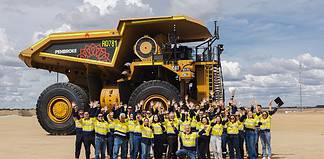Dangerous silica dust can be formed on site from concrete cutting, grinding or polishing and using power tools on stone.
Breathing the silica dust can result in irreversible, untreatable diseases, including silicosis and lung cancer.
Some dust particles can be so small that they are not visible: these are referred to as respirable particles.
Respirable silica dust particles are those that are small enough to breathe in and penetrate deep into the lungs causing permanent damage that can lead to serious illness or death.
Dust-related diseases caused by respirable crystalline silica, such as silicosis, is on the rise. There is no known treatment to stop the progression. Silicosis is permanent and untreatable.
In Australia, there are more than 350 cases associated with silica dust. Annually, about 600,000 Australian workers are at risk of inhaling silica dust at their workplace.
Occupational exposure is high for workers in industries including mining and quarry, constructions, agriculture and stonemasonry.
Safe Work Australia publishes exposure standards for airborne contaminants in the workplace.
The exposure standard for crystalline silica dust, listed under quartz (respirable dust), is 0.05mg/m3 as a TWA (time-weighted average) airborne concentration over eight hours.
An eight-hour time-weighted average exposure standard is the average airborne concentration of a particular substance permitted over an eight-hour working day and five-day working week.
The workplace exposure standard for respirable crystalline silica is based on the levels found in a person’s breathing zone, outside of any respiratory protective equipment that may be in use.
WorkSafe Victoria has gone above the national standard and recommends that employees are not exposed to levels above
0.02mg/m3 as a TWA. This is a precautionary measure to prevent silicosis and to minimise the risk of lung cancer.
Employers are required to ensure employee exposure does not exceed this standard.
Managing risk and worker exposures to silica can be achieved by selecting and implementing measures using the hierarchy of controls:
- Substitution such as sourcing composite stone benchtops with a lower percentage of silica
- Isolation of the hazard – using principles of safe work design to designate areas for tasks that generate dust and appropriate worker positioning during these tasks, using enclosures and automation to conduct dust generating tasks
- Engineering controls that minimise the risk of exposure to generated dust, for example, local exhaust ventilation, water suppression (wet cutting) or using tools with dust collection attachments
- Should a risk still remain: administrative controls, including good housekeeping policies, shift rotations and modifying cutting sequences, personal protective equipment including appropriate respiratory equipment (generally a minimum of a P2 efficiency half face respirator) and work clothing that does not collect dust.
Respirable crystalline silica is harmful toxic dust. It is preventable with precautions to minimise exposure and maintain a safe work environment.
It is highly recommended that workplaces provide adequate respiratory protective equipment (RPE) specifically designed and certified to protect workers from inhaling hazardous airborne contaminants.
With regards to respiratory protection, PAPRs (Powered Air Purifying Systems) with at least a P2 filter are the new benchmark across most industries.
Australian-made CleanSpace Respirators meet and exceed the minimum requirements for respiratory protection, with a P3 filter.
Unlike other Powered Air Purifying Respirators (PAPRs), CleanSpace Respirators are easy to put on (in under 10 seconds) and do not have heavy belts or hoses.
They also deliver cool fresh air to the wearer via a tightly sealed silicon mask that will eliminate moisture and fogging.
CleanSpace Respirators are AS/NZS 1716 Respiratory Protective Devices certified.
According to CleanSpace Technology CEO Alex Birrell, one of the main reasons people go unprotected is because of low compliance.
“If masks are uncomfortable or not quick and easy to put on then it simply doesn’t get used,” he said.
CleanSpace Respirators are a revolution in respiratory protection.
They are lightweight, offer the highest level of protection and have no belts or hoses.
Being reusable, they reduce costs and reliance on supply chains and stockpiling.
CleanSpace Technology, established in 2009 by world-class biomedical engineers, has designed and developed several respirators for various industries.
CleanSpace ULTRA is IP Rated 66 and water-tolerant, making it perfect for anyone wetcutting stone or concrete.
CleanSpace EX is intrinsically safe, certified for use in potentially explosive environments, and CleanSpace2 is for use where water tolerance or intrinsic safety is not required.
“As Australia’s only respirator company, we are proud to be supporting all those on the frontline in industry and healthcare stay protected from airborne contaminants,” Dr Birrell said.
CleanSpace Technology believes employees are an essential part of a business and the workplace environment must be safe for them.
The company hosts online presentations to share information on effective risk control, industry best practice and experiences to case studies from people in the industry.
There are two upcoming opportunities to join live sessions to learn more about CleanSpace Respirators and how they can protect you and your workers.
CleanSpace Technology supports on-going learning, product training, fit testing to provide instructions on maintenance and care with attentive customer support.
Respirable Crystalline silica is preventable.
SOURCE
CleanSpace Technology
[email protected]
www.cleanspacetechnology.com


